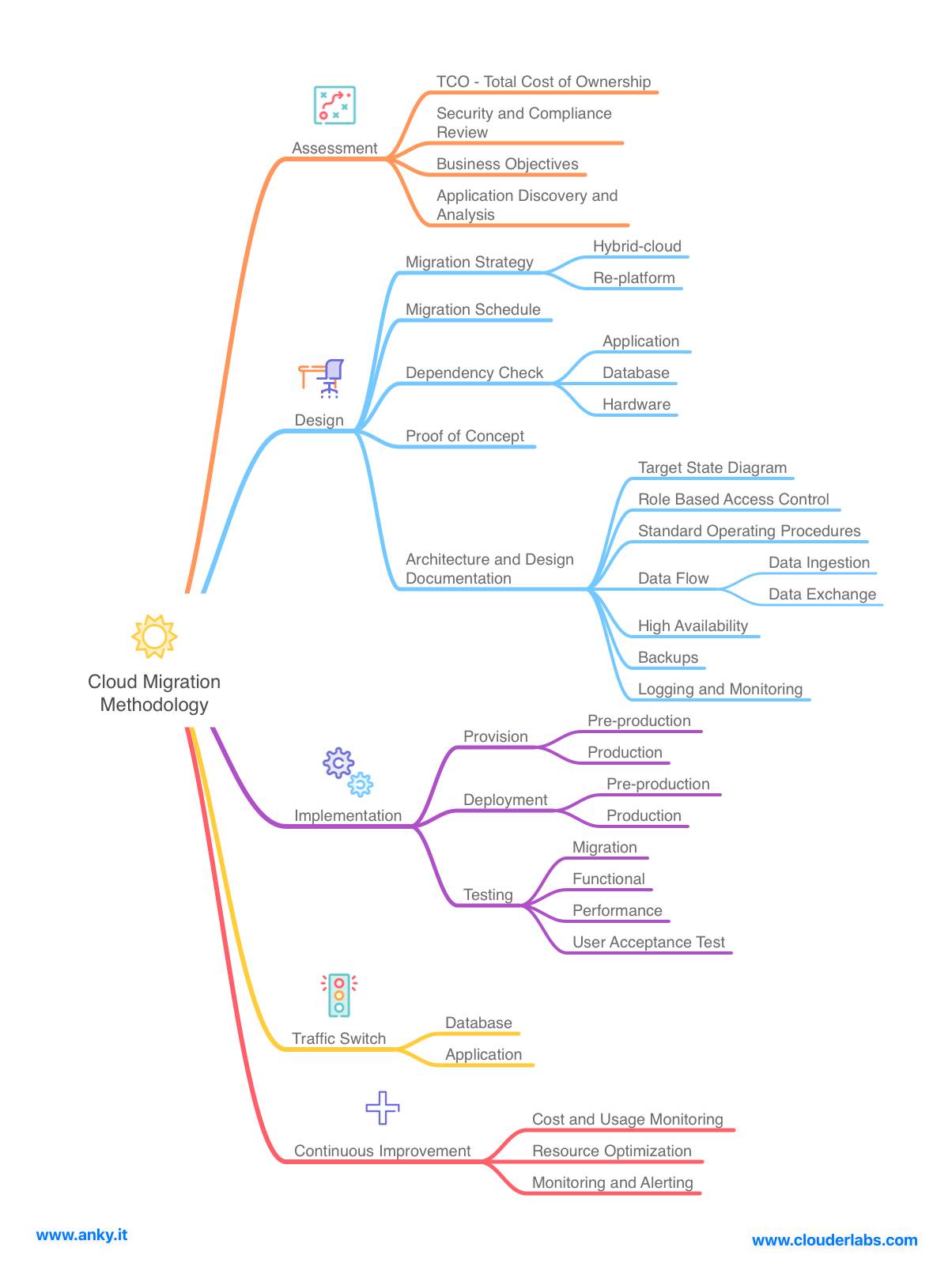A Comprehensive Guide to Cloud Migration Strategy

In the dynamic landscape of today's digital era, businesses are increasingly recognizing the transformative potential of cloud computing. Cloud migration is not merely a trend; it is a strategic imperative for organizations looking to enhance scalability, agility, and overall operational efficiency.
In this blog post, we will delve into a well-structured five-phase Cloud Migration Strategy to help businesses seamlessly transition to the cloud.

Phase 1: Assessment
The journey begins with a thorough assessment to lay the groundwork for a successful migration. Key considerations include:
- Total Cost of Ownership (TCO): Understanding the financial implications of the migration, including infrastructure costs, licensing, and ongoing operational expenses.
- Security and Compliance Review: Evaluating the existing security measures and ensuring compliance with industry regulations and standards.
- Business Objectives: Aligning the migration strategy with the broader business goals and objectives to drive value.
- Application Discovery and Analysis: Identifying and categorizing applications to determine their cloud suitability and potential dependencies.
Phase 2: Design
With a clear understanding of the existing landscape, the focus shifts to designing a robust migration plan. Key elements of this phase include:
- Migration Strategy: Choosing the right approach, whether it's a hybrid model or replatforming, to meet specific business needs.
- Migration Schedule: Establishing a timeline for the migration process, taking into account dependencies and potential downtime.
- Dependency Check: Analyzing application, database, and hardware dependencies to mitigate risks and ensure a smooth transition.
- Proof of Concept: Validating the feasibility of the migration strategy through a small-scale implementation.
- Architecture and Design Document: Creating a comprehensive document outlining the target state diagram, role-based access control, data flow, high availability, backups, and logging and monitoring strategies.
Phase 3: Implementation
With the blueprint in place, it's time to execute the migration plan. This phase involves:
- Provisioning: Setting up the necessary infrastructure in both pre-production and production environments.
- Deployment: Rolling out the migration in both pre-production and production environments.
- Testing: Conducting thorough tests, including migration, functional, performance, and user acceptance tests, to ensure the system's integrity.
Phase 4: Traffic Switch
This critical phase involves transitioning the live workload to the cloud. Key activities include:
- Database Switch: Migrating and redirecting data flows to the cloud database.
- Application Switch: Diverting live traffic to the cloud-based applications.
Phase 5: Continuous Improvement
Cloud migration is an ongoing process that requires continuous refinement and optimization. Key activities include:
- Cost and Usage Monitoring: Keeping a close eye on cloud costs and resource usage to identify potential optimizations.
- Resource Optimization: Fine-tuning resources to ensure optimal performance and cost-effectiveness.
- Monitoring and Alerting: Implementing robust monitoring and alerting mechanisms to promptly address any issues that may arise.
Conclusion:
A well-executed cloud migration strategy is pivotal for organizations seeking to thrive in the digital age. By following this five-phase approach, businesses can navigate the complexities of migration with confidence, ensuring a seamless transition to the cloud and unlocking the full potential of modern, scalable infrastructure.